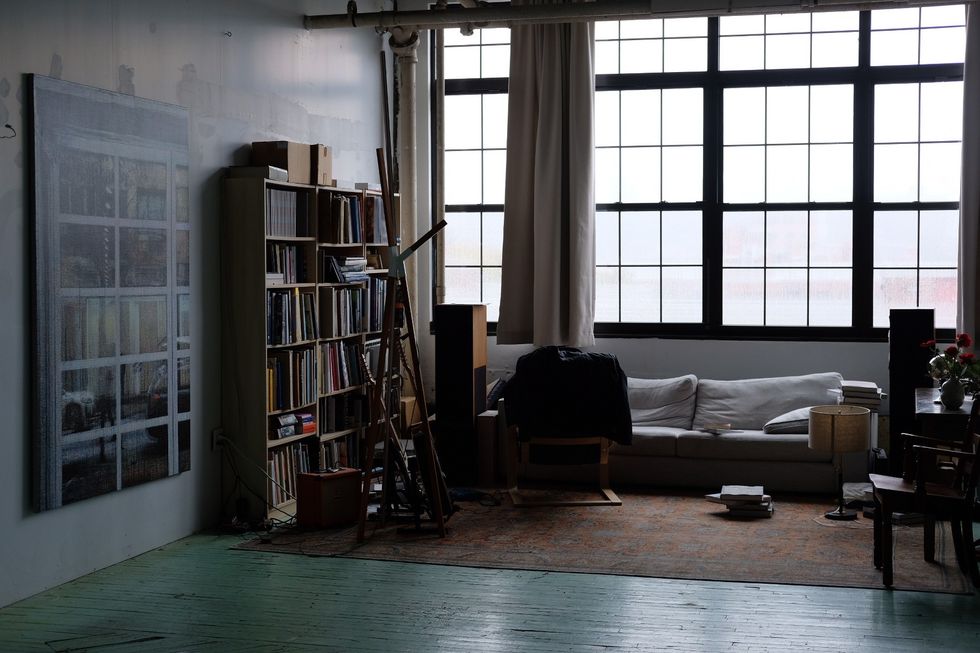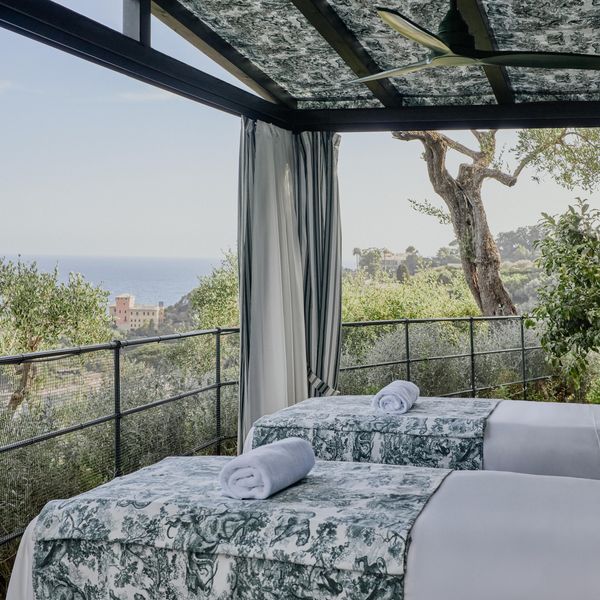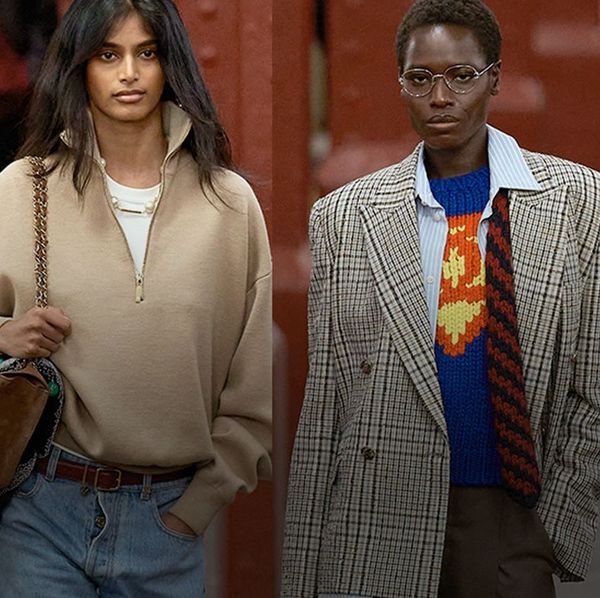Studio Visit: Asher Liftin's Painted Reflections
The Brooklyn-based artist on his creative process, inspirations, and the illusionism at the heart of his work.

Sophia Penske is the founder of Penske Projects and an art advisor at Gagosian Art Advisory. Each month, she covers the best of the art world for Coveteur through an insider lens.
This is the first of many looks inside of my favorite artists’ studios and minds that I’ll be sprinkling throughout the year. I sat down with my friend Asher Liftin to discuss his career as a painter. I’ve always admired the quiet clarity of his work—the way his paintings feel like fragments of remembered dreams, and the way the paintings transform as you move closer and further. There’s an influence of pointillism, yet he transforms the influence into his own modern genre; one will always recognize a painting is Asher’s.
From his Brooklyn studio, Asher explores how images transform when seen through different lenses—mirrors, screens, memory—and how those translations become their own kind of storytelling.

Asher Liftin
Tell me about yourself. Anything and everything!
Asher Liftin: "My grandmother taught me to make my first oil painting."
At what moment did you decide to have a career as an artist?
AL: "I never really decided to have a career as an artist, but it is the only thing I ever really wanted to be. When I was in third grade, my art teacher taught us a system for drawing a human face using a sequence of moves and proportions. The way that following extremely simple steps could result in a more complex/strong image really clicked for me. Then, I could do it a little bit better than the other students, which was also a thrill. At some point people began letting me put my paintings in galleries."
Who and what has been inspiring your recent work?
AL: "Many of my paintings are about reproduction, and my current painting process developed out of finding a way to translate digital images into painted surfaces. I have always liked paintings where the subject matter acknowledges its illusionism, or artificiality. Now I am working on paintings where the main event is a reflection, or refraction. There are subjects like figures, still lifes, landscapes visible in the reflections, but just as the painting is a type of translation from the photographic source, the image shows the subjects mediated by the reflective surface."

Asher Liftin
Where do you feel the most creative?
AL: "Driving, watching movies, reading, walking around museums and galleries… I need to work in my studio, but ideas never come to me from an empty canvas. I read once about a lost Leonardo Da Vinci painting showing a dense battle on horseback, which gave me the idea to make my own painting of tangled horses without riders. Another painting came about after I painted a picture of a candle and a friend of mine made a comment about 'burning the candle at both ends,' so I made another painting literalizing the idiom. I think it is important to me to find indirect ways to arrive at paintings, and often I find those through a process of doubling or distorted repetition."

Asher Liftin
Has your process evolved over time? If so, when and why?
AL: "I have distinct attitudes that I use to make work. One is analytical and wants to deconstruct the making of paintings and perception into parts and processes, and the other is a more romantic impulse wanting to respond intuitively to artworks or images that connect with an internal model of my own. The first is a desire to search for shared perceptual processes, and the latter an oblique approach to generality through a specific or personal gesture. Both personalities exist in all my paintings, and the way they conflict with each other helps to move the work in new directions. That is something I learned from loving Francis Picabia. He recognized the artifice of any subjective point of view and changed artistic identities like socks. He sometimes made Impressionist paintings, sometimes Cubist, but in each case he achieved a systematic distance that became about the making of a painting—the building of a visual model over a focus on what the model illustrates."

Knights Move, 2024
Elisabeth Bernstein, courtesy of Nino Mier Gallery
If you could live and work anywhere for a year, where would it be?
AL: "Maybe in Germany or the Netherlands. When I visit, I relate to the grey-blue-green palette there and the northern light. It always looks like it has just rained. It reminds me in some ways of the American Northeast, which I have spent a lot of my life in."
What’s hanging on your walls right now?
AL: "I am writing from my living room, and in here there is a subtle horizontal painting by Robert Storr of a long grey bar with blue gray notches on either end (he has a great show on now at Vito Schnabel Gallery in New York); two paintings by Phoebe Helander (her beautiful paintings also up now at PPOW in New York)—a self portrait of herself in orange eyeliner, and a still life of tangled garlic scapes; a graphite drawing by Ronan Day-Lewis of a glowing creature appearing in a living room; an ink drawing by Lenna Christakis of various floating windows onto the world; a Dürer engraving of The Prodigal Son; a small gem painted by Lisa Ivory of a nude woman wrestling a skeleton (and winning); a painting by Matt Reiner of a closely cropped doubled image of pink tulips; a photograph by Jack Shear of the Red Hot Chili Peppers still as a group of kids who got stoned outside a recording studio; and a postcard of a Sigmar Polke painting depicting a nearly nude woman, which he signed the front of.




